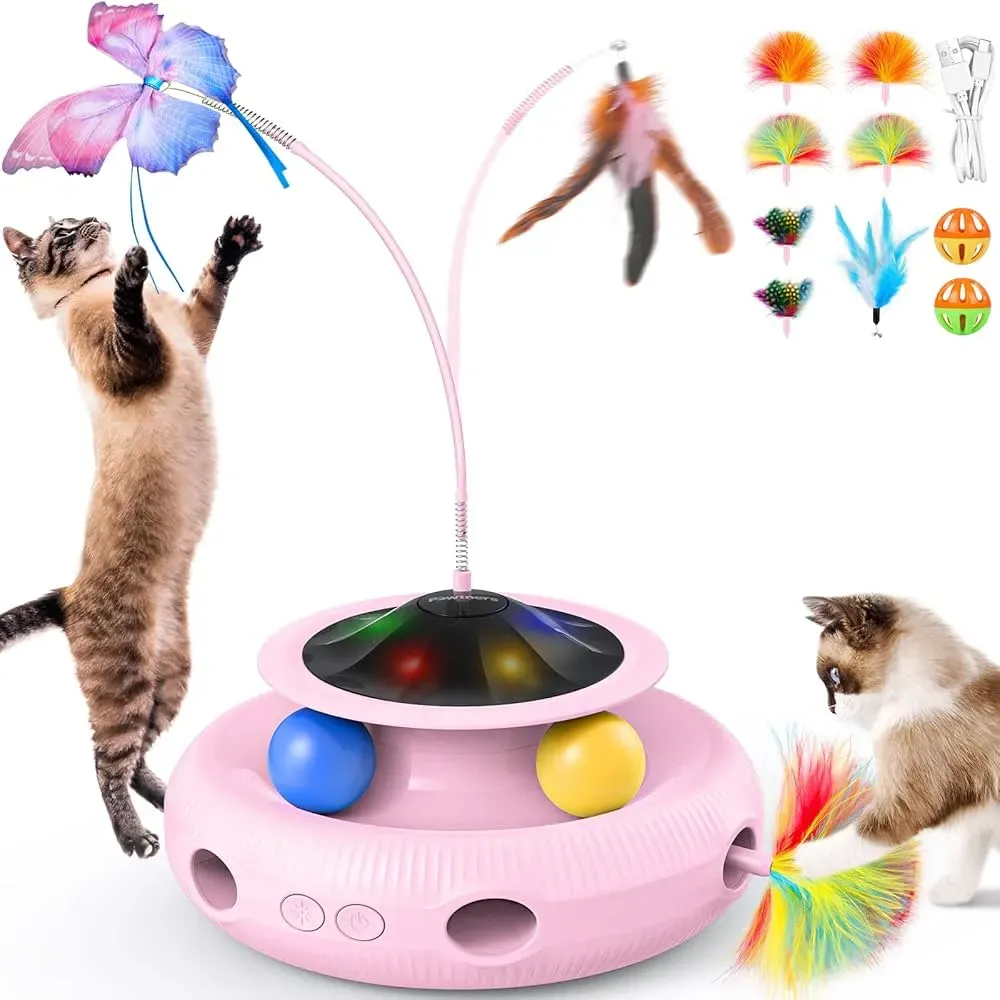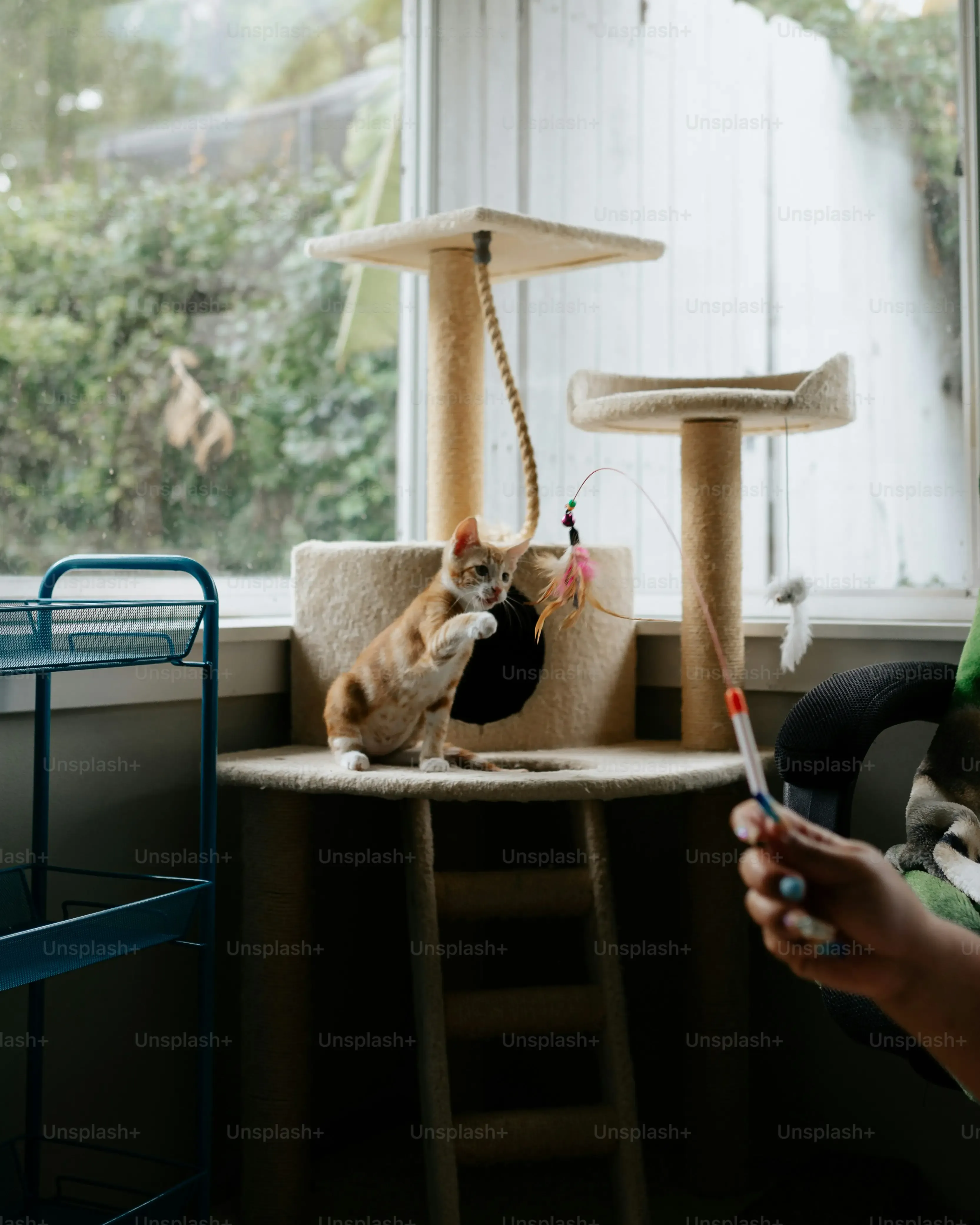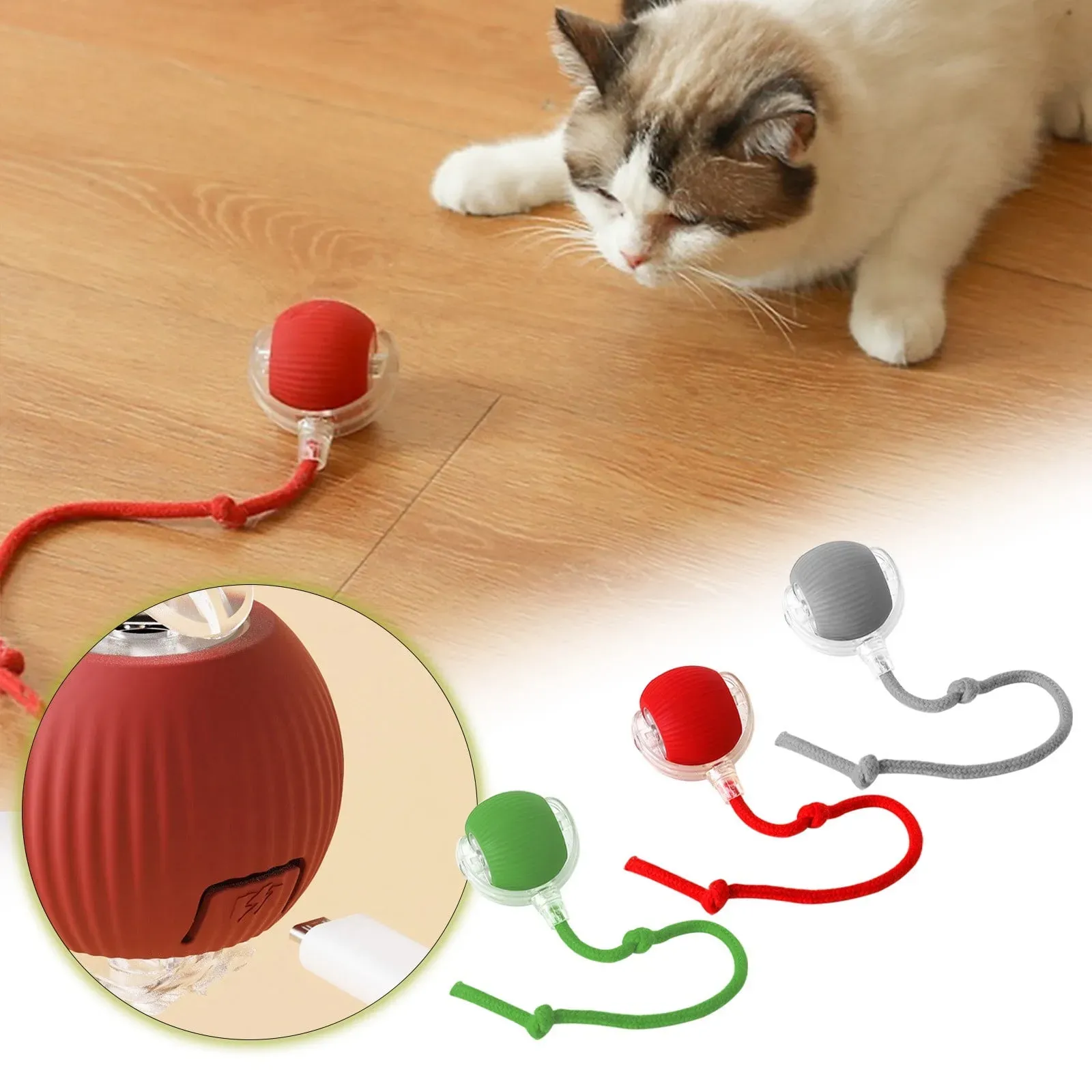Table of Contents
You've probably seen your cat go from zero to sixty when a dust bunny skitters across the floor, or maybe they eye that laser pointer with the intensity of a seasoned hunter. But when it comes to actual toys, sometimes they act like you just presented them with a box of rocks. It makes you wonder, do cats like interactive cat toys, or are you just wasting your money on plastic and feathers that end up ignored under the sofa? It’s a fair question. Your feline companion, despite their occasional aloofness, is a creature hardwired for the hunt, for stalking, pouncing, and engaging with their environment. Leaving them with static toys all day isn't exactly replicating the thrill of the chase. Interactive toys, the kind that move, hide, or require some thought, tap into this primal instinct. They aren't just frivolous purchases; they're tools for keeping your indoor predator mentally sharp and physically active. We'll dig into *why* these toys often hit the mark with cats, how to spot the duds from the winners, and how to actually get your cat to play with the expensive gadget you just bought instead of the cardboard box it came in. Let's figure out how to make playtime less of a chore for you and more of a triumph for your cat.
Why Interactive Toys Are Key to a Happy Cat

Why Interactive Toys Are Key to a Happy Cat
Alright, let's be real. Your cat isn't just a furry couch ornament. Underneath that purring exterior is a tiny predator, hardwired with millennia of hunting instincts. Ignoring these instincts is like telling a fish to climb a tree; it just doesn't work out well for anyone. That's precisely why interactive toys aren't just fancy trinkets; they're practically essential for keeping your indoor cat from developing questionable hobbies like attacking your ankles or redecorating your furniture with their claws. These toys tap directly into their drive to stalk, chase, and "kill" prey, providing a crucial outlet for pent-up energy and mental stimulation. Without this kind of engagement, boredom sets in, and trust me, a bored cat is rarely a well-behaved cat. They need that challenge, that unpredictable movement, that feeling of a successful hunt to stay happy, healthy, and out of trouble.
So, Do Cats Really Like Interactive Cat Toys?

So, Do Cats Really Like Interactive Cat Toys?
Spoiler Alert: Yes, But There's a Catch
let's cut to the chase: do cats like interactive cat toys? Generally, yes, they absolutely do. Think about it from their perspective. You dangle a wand toy with a feather, it flits and darts like a scared bird. You turn on an electronic toy that zips across the floor erratically, it mimics a scurrying mouse. This isn't just random fun; it's triggering that deep-seated prey drive we talked about. My own cat, Mittens, usually a creature of serene indifference unless a food bowl is involved, transforms into a furry, low-slung hunter the moment I pull out the fishing rod toy. She stalks, she wiggles her butt, she pounces with surprising agility for a cat whose main exercise is walking to her food dish. Static toys, like a stuffed mouse just sitting there, are boring because they don't act like prey. Interactive toys replicate the unpredictable movement and challenge of a real hunt, which is incredibly rewarding for them.
It's About the Hunt, Not Just the Toy
The key here isn't just the *toy* itself, but the *interaction* and the *simulation* of the hunt. A laser pointer, for instance, can be incredibly engaging because of its unpredictable movement, but it lacks the satisfaction of the "kill." That's why experts often recommend letting your cat catch the light at the end, or immediately following up with a physical toy they can sink their claws into. Good interactive toys provide that full cycle: stalking, chasing, pouncing, and finally, the satisfying capture. This kind of play reduces stress, prevents boredom-related behaviors like destructive scratching or excessive vocalization, and helps keep them physically fit. It's not just about whether do cats like interactive cat toys; it's about providing them with a necessary part of their behavioral well-being.
Common Types of Interactive Cat Toys Cats Often Enjoy:
- Wand toys (feathers, ribbons, or toys on a string)
- Laser pointers (used responsibly, ending with a physical toy)
- Electronic motion toys (like those that hide and reveal a "mouse")
- Puzzle feeders (requires problem-solving to get treats)
- Remote-controlled toys (allows you to control the movement)
Finding the Best Interactive Cat Toy Your Cat Will Love

Finding the Best Interactive Cat Toy Your Cat Will Love
It's Not One-Size-Fits-All, Sadly
Alright, so you know your cat needs interactive play, but walking into a pet store or browsing online can feel like navigating a minefield of squeaky, battery-operated potential dust collectors. The harsh truth is, there's no single "best" interactive toy for *every* cat. What makes one feline friend go bonkers might leave another completely unimpressed, staring at you like you've lost your mind. It depends on their personality, their age, and what kind of "prey" they're naturally drawn to. Some cats are bird watchers, obsessed with things that flutter and dart. Others are confirmed ground hunters, fascinated by anything that scurries low to the floor. Paying attention to how your cat plays naturally – what they stare at out the window, how they react to bugs in the house – gives you crucial clues about what kind of interactive toy might actually get their motor running.
Look for the Right Moves and Textures
When you're trying to figure out do cats like interactive cat toys from the endless options available, focus on motion and texture. Toys that move unpredictably are usually winners. Think wands that you control, electronic toys with erratic patterns, or even simple crinkle balls that bounce strangely. Textures matter too. Feathers mimic birds, fuzzy things feel like mice, and anything crinkly sounds like rustling leaves or insect wings – all things that trigger their hunting sequence. Avoid anything with small parts that can easily be chewed off and swallowed; safety trumps everything. And sometimes, the simplest things work best. A piece of string tied to a stick, moved like a bug, can be more captivating than the most expensive gadget.
What to Consider When Picking a Toy:
- Movement: Is it unpredictable? Does it mimic prey?
- Texture: Does it feel like something they'd hunt (feathers, fur, crinkle)?
- Safety: Are there small parts they could swallow? Is the material non-toxic?
- Durability: Can it withstand enthusiastic pouncing and biting?
- Your Involvement: Does it require you, or is it automatic? (Both have value!)
Tips for Successful Interactive Playtime
Be the Prey, Not Just the Wielder
So, you've got the interactive toy, maybe even one you think answers the question, do cats like interactive cat toys, specifically for your furry friend. Great. Now, don't just wave it around wildly like you're conducting an orchestra of chaos. That's rarely how actual prey behaves. Think about how a mouse scurries, how a bird flits. It's stop-and-start, hiding, peeking out, then darting away. Mimic that. Drag the wand toy under a rug, let it disappear behind a chair, make it pause and wiggle before making a break for it. This unpredictability is what triggers their hunting sequence. Allow them to stalk, to wait in ambush, to feel the tension build before the chase. Your job is to make the toy believable, to make it act like something worth hunting, not just a confusing blur.
Consistency and the Crucial "Kill"
Interactive playtime isn't a one-and-done deal. Aim for a couple of sessions a day, even just 10-15 minutes each. Cats are crepuscular hunters, most active at dawn and dusk, so those times often work best. More importantly, always, *always* let them catch the toy at the end of the session. This is the "kill" part of the hunt cycle, and it's incredibly important for their satisfaction and confidence. Ending play with frustration, like never letting them catch the laser dot, can actually be detrimental. Let them capture the toy, maybe even give it a few "death kicks" with their back feet. After they've "killed" it, put the toy away. This signals the end of the hunt and keeps the toy novel and exciting for the next session. Leaving interactive toys out all the time makes them boring.
Key Interactive Playtime Tips:
- Mimic realistic prey movement (stop, start, hide, dart).
- Aim for 10-15 minute sessions, ideally twice a day.
- Always let your cat "kill" or capture the toy at the end.
- Put interactive toys away when playtime is over.
- Pay attention to what kind of movement and texture your cat responds to best.
The Verdict: Do Cats Like Interactive Cat Toys?
So, after all the chasing and pouncing, the answer to "do cats like interactive cat toys?" is generally a resounding yes. They tap into that deep-seated hunter programming that a static mouse toy just can't replicate. It's not about buying the most expensive gadget, but finding what sparks that predatory fire in *your* particular cat. Some will go bonkers for a simple feather wand, others need the puzzle feeder challenge, and a few might just stare at the fancy automatic toy like it owes them money. The key takeaway isn't that every interactive toy is a guaranteed hit, but that engaging their minds and bodies through interactive play is crucial for a well-adjusted indoor cat. It beats them inventing their own, potentially destructive, games out of your furniture. Find what works, keep it fresh, and you'll likely see a happier, more stimulated feline companion.